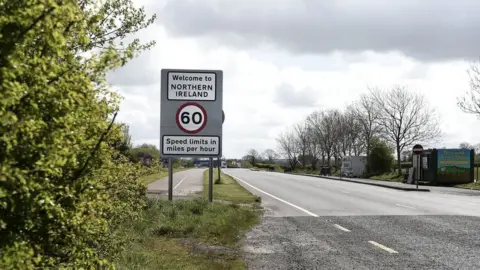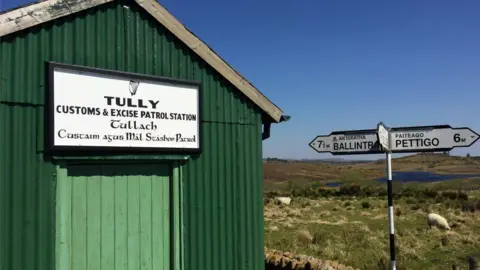Q&A: Brexit and the Irish border
 Getty Images
Getty ImagesWith exactly one year to go until the United Kingdom leaves the European Union on 29 March 2019, there are still many questions over what will happen to the Irish border after Brexit.
What has been agreed on the border?
In December the UK and EU reached a political agreement in which the UK committed to protecting north-south cooperation on the island of Ireland.
It also guaranteed there would be no hard border, including physical infrastructure or related checks and controls.
How is that outcome to be achieved?
The preference of both sides is to keep an open border in the context of an overarching trade deal.
However, that could be difficult to achieve if the UK sticks to all its 'red lines', which include leaving the EU customs union and the single market.
Prime Minister Theresa May has said that a 'Canada style' trade deal would not be enough for the UK to meet its obligations.
So what else could be done?
The second option is a special arrangement for Northern Ireland which could involve devolution of additional powers and the use of border technology.
Brexit supporters have been enthusiastic advocates of a technological solution.
But if that option does not work?
The two sides agreed that if all else fails there will be a 'backstop'.
It would involve the UK maintaining full alignment with those rules of the EU's single market and customs union which support north-south cooperation.
However, despite agreeing to this in principle, the UK has rejected the EU's interpretation of what it means.
What is the difficulty?
Soon after the December deal it became clear the UK believed alignment would only need to apply to a narrow range of areas.
By contrast the EU took a much more expansive view.
That was confirmed in February when the EU published its legal interpretation of the deal.
In effect it concluded that the backstop would have to mean Northern Ireland staying in the EU customs union, the single market for goods and the VAT area.
The language of the EU text also described the backstop as applying "in respect of Northern Ireland" rather than the UK as a whole.
That made it unacceptable to unionists and Theresa May said no prime minister could ever agree to it.
So what is happening now?
The prime minister has re-committed to agreeing a backstop option and the two negotiating teams have begun working on this.

Given a two-year post-Brexit transition period has been agreed, can this issue just be parked?
No. The transition period is dependent on a backstop option being agreed first.
The Irish government has said it needs this assurance that there will be no backsliding on the border issue as the Brexit talks progress.
It would like to see an agreement reached by June.
So beyond the broad principles, has anything really been agreed yet?
There are a few areas of practical agreement.
The two sides agree that the Common Travel Area will continue.
It is the arrangement that allows citizens of the UK and Ireland to have passport-free travel between each other's jurisdictions and grants a range of other rights.
They have also agreed to "maintain the necessary conditions" that allows the areas of cooperation defined in the Good Friday Agreement and its implementation bodies.
